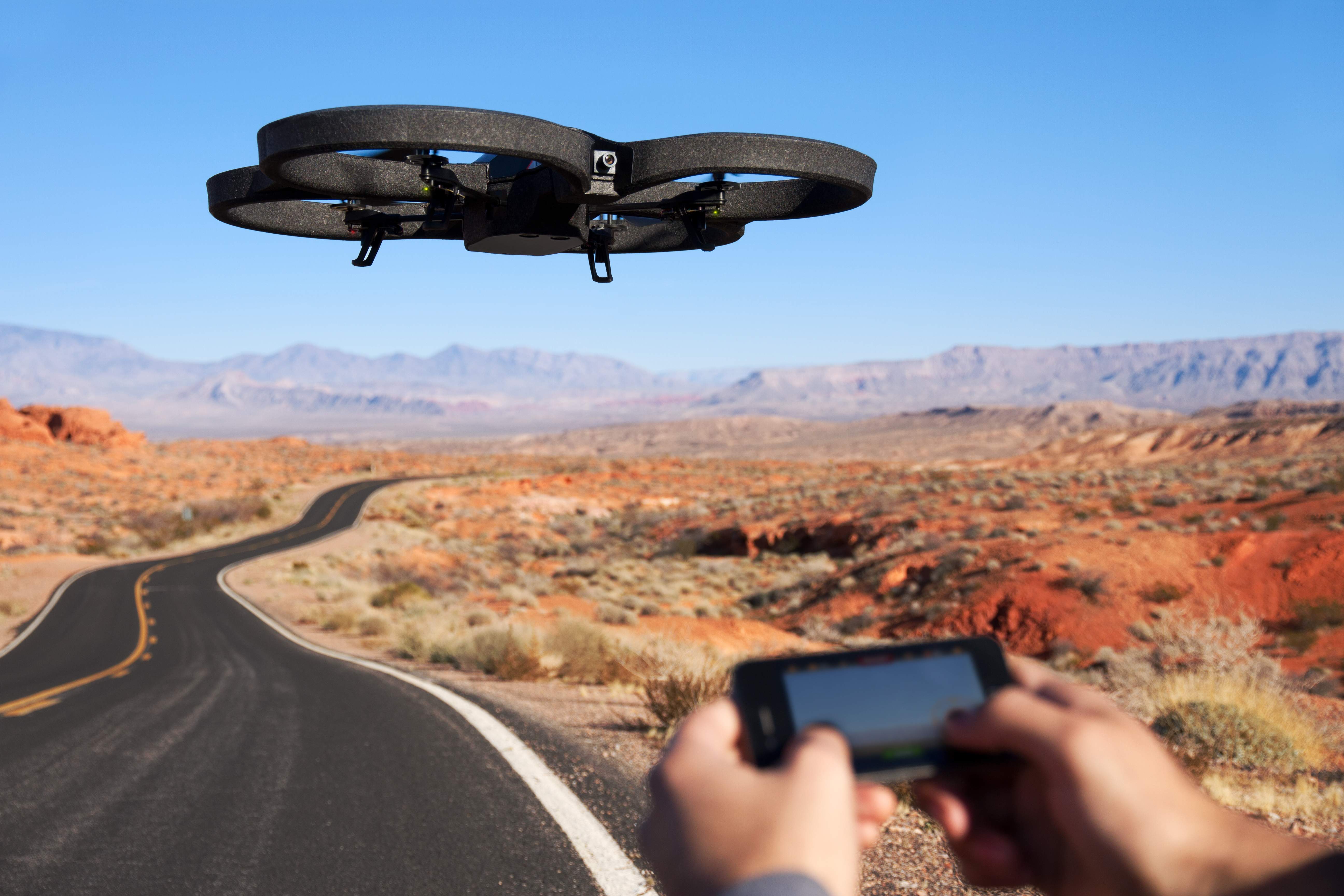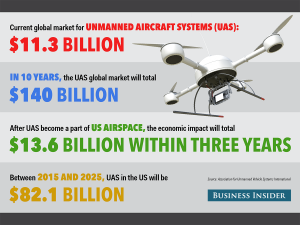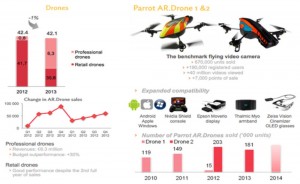Commercial Drones, the next step toward evolution? Moving goods from one place to another isn’t always as simple as it sounds. Intricate supply chains are often needed to coordinate transit across different countries, incorporating various modes of transportation. Every so often, new technologies come along that revolutionize how we send goods to other places. In the 20th century, it was the advent of container shipping; in the 21st century, it was the rise of a global marketplace made possible by the Internet, which changed shopping behaviors in the developed world and increased the demand for rapid delivery.
Now, as existing infrastructure struggles to keep up with the rising congestion that comes with growing demand, new technological developments are on the horizon that could help relieve some of that burden and improve the efficiency of global supply chains. Within the next five years, drones could become widely used to help transport goods. But rapid advancement and keen industry interest aside, the realities of regulation and technological constraints will limit the role of drones in delivering goods to customers in the United States, at least in the short term.
Overcoming Regulatory Hurdles
In 2012 the U.S. Congress instructed the Secretary of Transportation to “establish requirements for the safe operation of [unmanned] aircraft systems in the national airspace system.” Three years later, the Federal Aviation Administration responded by releasing its proposed rules of operation. The 195-page document, published in February, contained both laudable and questionable stipulations, but one overarching concern received the most attention: safety.
For any new airspace regulation, the FAA is required to consider three criteria: the safety of the aircraft, the efficient use of airspace and the protection of people and property on the ground. Based on the proposed regulations, FAA officials are going to great lengths to ensure drones can operate safely around other aircraft and people, even when pilots are far away. The new rules, if passed, would require operators to keep drones within their line of sight throughout the entire flight. (The regulations likely will not be finalized until late 2016 or early 2017 because of a lengthy commenting and revisions process.)
Both the U.S. airspace system and the Federal Aviation Administration that oversees it were built on the assumption that pilots control aircraft from onboard. The line-of-sight requirement reflects the FAA’s long-standing rules on determining right-of-way in the air, which mandate that operators stay vigilant “so as to see and avoid other aircraft.” In modern manned aircraft, cockpit and control tower technologies have advanced enough to enable planes to stay separated and avoid hazards without needing the pilot to maintain visual continuity. The development of technologies that provide an equal level of safety assurance, be they autonomous piloting, networked control or other advances, will be critical to making drone flight feasible in congested urban areas.
A Gradual Development Process
Since its February announcement, the FAA has been working with industry partners to test technologies that could satisfactorily overcome the discrepancies between current regulations and drones’ potential uses. To this end, six test sites have been set up across the United States, where certain companies can look for ways to address safety concerns under three specific use scenarios in a controlled environment. Those scenarios are maintaining line of sight in urban areas where bystanders are present; operating in rural areas where observers extend the operator’s “sight”; and operating in isolated areas beyond the operator’s line of sight. In May, the tests led to the first FAA-approved drone delivery when a medical clinic in rural Virginia received much-needed supplies from an unmanned aircraft. And just this week, companies conducted the first approved long-distance drone flight in the United States and began testing a new avoidance system technology that will help operators “see and avoid” obstacles even when the aircraft are far out of their visual range.
Alongside these trials are, of course, the widely publicized tests that private sector behemoths such as Amazon, Wal-Mart and Google are performing. Amazon is primarily focusing on developing technology to guarantee safe and quick home deliveries as well as the battery capacity to make such devices feasible. Wal-Mart is also hoping to someday use drones to make home deliveries, but for now the retail giant is trying to figure out how to use unmanned technology to manage inventory at distribution centers and deliver goods from warehouses to stores. Google, meanwhile, has been working with NASA engineers to create an autonomous air traffic control system for drones while tackling — no surprise — the problem of unmanned home deliveries. All three of these companies have the ambitious timeline of bringing their drones into commercial operations by 2017.
The outcome of the various tests will determine how and where the first generation of commercial drones is used in the United States. So far, it appears very likely that drones will improve efficiency in warehouse operations in the near future. Deliveries in rural areas, especially to set locations such as warehouses, stores or lockers, also seem to be a real possibility. While these uses would not increase speed or efficiency in the final stages of delivery — bringing goods directly to people’s front doors — they would improve other phases of the supply chain. In addition, they would give companies a controlled environment in which they could test even more advanced delivery systems.
Still, none of the trials have managed to simultaneously address the problems of bystander safety and maintaining line of sight — both of which are concerns in urban environments. Therefore, it is unlikely that urban deliveries will be among the first tasks of commercial drones. Instead, companies will first use drones to make warehouse and stockyard operations run more smoothly and then turn their attention toward rural deliveries. Urban operations will probably have to wait until the second or third phase of development.
Even when drones begin operating regularly in urban environments, a number of problems will confront the U.S. unmanned aerial vehicle network. The United States has the busiest and most complex airspace in the world, meaning congestion will still be a problem. The introduction of thousands of new airborne vehicles will put further stress on an air traffic control network that is already spread too thin and a national airspace system that is already at or over capacity in many places. Transportation and supply chain technologies allow countries to overcome their geographic constraints; in this, drones are no exception. But like their predecessors, unmanned aerial vehicles will not come without their own limitations, nor will the transition be seamless.









